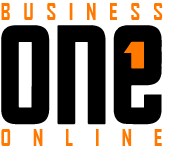What is Business Casual Policy? Find out what attire is suitable for the office.
- In many professions, business casual attire has become the standard. It allows workers the flexibility to dress as they choose, as long as it is suitable for the workplace, allowing them to concentrate on their job rather than their appearance.
- A sport coat or casual blazer, a collared shirt, a casual button-down shirt, casual pants (such khakis or chinos), a belt, dress shoes, loafers, or stylish boots with socks are examples of typical business casual attire for men.
- For example, a dress or skirt that is at or below the knee, trousers, high heels, dress boots, flats, and modest jewelry and accessories are all appropriate business casual attire for women.
The era in which business casual attire was expected has long since passed. Instead, there are workplaces that are more relaxed (and hoodie-ridden fintech companies). Some people are left wondering what precisely business casual clothing entails when companies and workers make the shift to a more relaxed work atmosphere.
The sayings “dress for the job you want, not the job you have” and “look good, feel good” are surely familiar to you. Despite how cliché it may seem, new research by ScienceDirect has shown that what you wear may really affect your psychological functioning. Enclothed cognition is the name given to this phenomenon.
Employers are allowing their workforce greater latitude to dress whatever they choose since they believe that an employee’s performance is correlated with how they feel about their look. As a consequence, “casual dress” has spread across numerous industries. According to a 2018 Employee Benefits Report, 50% of the employers polled permitted casual clothes every day, with 88% permitting it at least once a week.
According to Yvonne Cowser Yancy, CEO of YSquare Advisors and certified Senior Professional in Human Resources, a business casual dress code tends to be less costly for workers and gives them more flexibility to express themselves in addition to improving employee performance.
Business causal policies are more of an expectation than a benefit in the workplace nowadays, according to Yancy, speaking to Business News Daily. This policy change is being implemented by businesses in a variety of industries, including financial services and technology, and it produces a benefit that is regarded highly by workers while costing the organization nothing.
According to Yancy, a company’s desired culture may be impacted by the dress code for employees. For instance, General Motors reduced a 10-page guideline to two sentences when it updated its dress code in 2009: “Dress correctly.”
Yancy said that this modification in the clothing code was a reflection of the cultural shift that Mary Barra, the current CEO, and her predecessor as the global head of human resources, sought to implement.
According to Yancy, “She wanted to empower her staff and stop assuming what they could and could not achieve.” A fantastic metaphor for the shift she wished to see take place, not only for her staff but also for the company’s future, was the dress code being reduced from a lengthy bureaucratic treatise to two sentences.
Does your place of work value tradition and rigid structure more than change, individuality, and innovation?
What does “business casual” attire entail?
A business professional dress code is reasonably easy to define: a pantsuit, professional dress, or skirt for women, and a suit and tie for men. It might be more difficult to define business casual clothes since it varies by employer, sector, and even area.
Valerie Rice, a personal stylist and trend analyst in Silicon Valley, emphasized the variations per sector and organization, despite the fact that modern professional wear is generally going toward a more relaxed look. She said that although the legal and financial sectors often dress more traditionally, creative agencies, tech startups, the fashion and film industries always seem to favor a more laid-back and creative look. She did, however, claim that even conventional businesses are becoming more relaxed.
According to Rice, “a large national bank recently declared that staff may wear jeans in the corporate offices every day, not just on the customary Casual Friday.” “Chinos, not jeans, with the exception of staff who deal directly with clients.”
Employers and workers should be aware that different regions may have different definitions of business casual. For instance, Rice said that whereas the East Coast is more traditionally dressed, the West Coast may accept chinos and a bomber jacket as business casual clothes.
A business casual dress code, regardless of the precise outfit allowed, is intended to provide workers the opportunity to wear relaxed, but professional, clothes so they may concentrate on job performance rather than business attire.
According to Wendy Webster, finance and HR manager of Ramblers Walking Holidays, “a business casual dress code gives flexibility for an employee’s own style while keeping a professional foreground.” “Things like a paisley jacket, a wacky blouse, or something altogether different are possible because of this. There is no need for ties or pantsuits, but the attire shouldn’t be inappropriate for a boardroom.
What does men’s business casual clothing entail?
Depending on the industry and locale, there may be subtle variations in what is considered business casual. However, we compiled a list of men’s apparel that is often regarded as business casual after speaking with several company owners, stylists, and HR specialists.
- Sport coat or a non-formal blazer (optional)
- Shirt with a collar or a casual button-down
- Tie (optional) (optional)
- informal pants such as khakis or chinos
- Belt
- Wearing socks, wear dress shoes, loafers, or good boots (high-end athletic shoes are becoming acceptable in some areas as well)
Wearing a dress shirt beneath a simple sweater or cardigan during the cooler months is a traditional business casual appearance, according to Webster. This maintains a man’s professional appearance while still making him seem accessible and personable.
What does women’s business casual clothing entail?
Due of the complexity of women’s apparel compared to men’s, choosing the right business casual wear may be challenging. But after consulting with a number of company owners, stylists, and HR experts, we compiled a list of woen’s attire that is often appropriate in business casual settings.
- blouse with a collar or one without
- Slacks (at least three-quarters length) (at least three-quarters length)
- skirt or a dress (at or below the knee)
- Flats, dress boots, or high heels (open-toed shoes are becoming acceptable in the summer months)
- Discreet jewelry
- Accoutrements like patterned scarves
According to Webster, dressing in business casual for women is a terrific way to add some more color to a look. For instance, silk scarves and wraps work well for creating a business casual style, as can tastefully patterned shirts and tops.
What kind of business casual dress is inappropriate?
Another murky area is what constitutes appropriate business casual attire. Your industry, area, business, or job may have an impact on what is appropriate at your place of employment.
According to Rice, “unacceptable business casual dress is anything that the individual employer may deem unsuitable wear.” The meaning of your clothing may vary depending on whether you are a junior employee or an experienced management.
Always err on the side of caution while picking your attire. Being overdressed is always preferable than being underdressed. According to Yancy, inappropriate attire often comprises of any ensembles you would wear to a barbecue, the beach, a camping trip, a yoga class, the gym, or a club. We compiled a broad list of attire to shun in any job after talking with her and numerous other company owners, HR experts, and stylists.
- halter tops
- shirts with cold shoulders
- low-cut shirts
- worn-out or torn clothes
- high-hemmed shorts, skirts, or dresses
- Flip-flops
- loud or distracting jewelry
You must keep in mind that business casual wear means dressing down your job clothes rather than dressing up your regular clothes, according to Webster. This is why you should never enter the building with sneakers or boots with a casual vibe. Keep a different pair of shoes at work to change into once you get at the workplace, even if you wear them for the commute.
Are jeans acceptable workplace attire?
Can I wear jeans? is one of the most frequent queries you could have while choosing a business casual ensemble. Whom you ask will determine the response. We got conflicting responses on this question from experts.
This may vary depending on the particular business you work for, much like the rest of your outfit. For instance, it is doubtful that your employer would let you to wear jeans to work if you have a position that requires you to interact professionally with clients. But if you work for a finance startup where the dress code is more liberal, a good pair of blue jeans would be fine. Determine the suitable attire for your job and adjust your attire to reflect the degree of professionalism.







